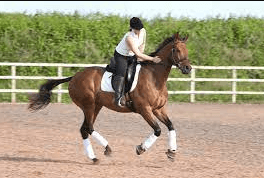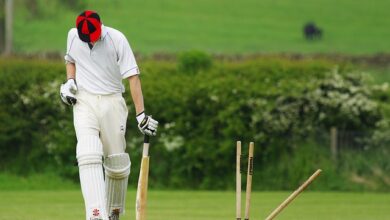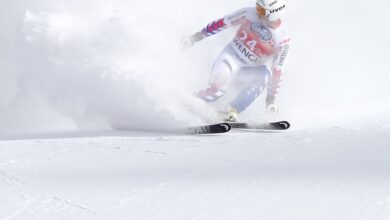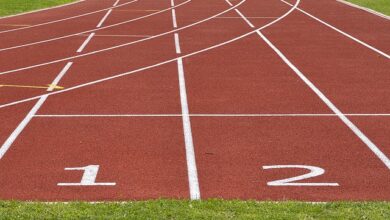How Can One Train A Horse For Dressage?

Dressage, a discipline rooted in the art of horse training, requires an intricate and systematic approach to achieve excellence. This article delves into the various stages of training a horse for dressage, from establishing ground manners and obedience to perfecting accuracy and precision. By following these steps, riders can develop a strong foundation that allows them to progress towards advanced movements with finesse.
Understanding the Basics of Dressage is an essential first step in training a horse for this elegant discipline. Dressage emphasizes harmony between horse and rider, where communication occurs subtly through precise aids and body language. The goal is to create fluidity, balance, and grace in every movement.
To achieve this, trainers must establish Ground Manners and Obedience early on. Horses must learn to respect their handler’s space, respond promptly to cues, stand quietly for mounting/dismounting procedures, and maintain proper behavior at all times. By instilling these fundamental principles from the beginning, trainers set the groundwork for successful dressage training.
Understanding the Basics of Dressage
The foundation of dressage training lies in the mastery of basic movements and exercises that develop the horse’s strength, balance, and suppleness.
Dressage training offers numerous benefits for both horse and rider, including improved athleticism, increased communication and partnership between horse and rider, as well as enhanced coordination and flexibility.
To properly train a horse for dressage, it is essential to have the right equipment and attire. Dressage equipment typically includes a well-fitted saddle, bridle with a snaffle bit, and appropriate leg protection for the horse.
The rider should wear comfortable yet professional attire such as breeches or jodhpurs, riding boots or tall boots with half chaps, gloves, a helmet for safety purposes, and may also choose to wear a show jacket or vest depending on the level of competition.
By understanding these basics of dressage training along with having the necessary equipment and attire, riders can embark on their journey towards mastering this elegant discipline.
Establishing Ground Manners and Obedience
Establishing ground manners and obedience in the equine partner is akin to laying a solid foundation of mutual trust and respect, resembling the sturdy roots of a flourishing tree.
Building trust is essential as it forms the basis of a successful dressage training journey. Through consistent and patient handling, horses can learn to trust their handlers and develop a willingness to follow commands.
Desensitization techniques play a crucial role in this process, helping horses become accustomed to various stimuli that they may encounter during their dressage training. By gradually exposing them to different objects, sounds, and experiences, horses can learn to remain calm and focused even in potentially stressful situations.
This not only promotes safety but also enhances their ability to concentrate on the intricate movements required in dressage.
Incorporating desensitization techniques into the training regimen allows for better communication between horse and rider, ultimately leading to improved performance in the dressage arena.
Developing a Solid Foundation
Developing a solid foundation in equine training involves building a strong framework of fundamental skills and techniques that serve as the bedrock for further advancement in equestrian disciplines.
To achieve this, it is crucial to focus on developing balance and suppleness in the horse’s movements. This can be done through exercises such as circles, serpentines, and transitions between gaits, which help the horse become more flexible and responsive to the rider’s aids.
Additionally, building strength and flexibility is essential for the horse to perform dressage movements with ease and grace. Exercises such as lateral work, shoulder-in, haunches-in, and leg-yielding can help strengthen the horse’s muscles and improve overall flexibility.
By incorporating these exercises into the training program, a solid foundation can be established for future dressage training.
Introducing Basic Dressage Movements
Introducing the basic movements of dressage allows for a harmonious partnership between rider and equine, as they gracefully navigate through intricate patterns and sequences.
Developing suppleness is crucial in dressage training, as it enables the horse to move fluidly and with ease. This involves exercises that stretch and flex the horse’s muscles, promoting elasticity and responsiveness.
By incorporating lateral movements such as leg yield and shoulder-in, riders can encourage their horses to develop flexibility and engage their hindquarters, resulting in increased balance and self-carriage.
Maintaining balance is another essential aspect of dressage training. Through exercises such as circles, serpentines, and transitions within gaits, riders can teach their horses to distribute weight evenly over all four legs while maintaining rhythm and relaxation.
Achieving a balanced frame allows the horse to carry themselves effortlessly without placing excessive strain on any particular area of their body.
Overall, introducing basic dressage movements not only enhances the physical abilities of the horse but also establishes a foundation for communication and harmony between rider and equine partner.
Progressing to Advanced Movements
Advancing to more complex movements in dressage requires a deep understanding of the intricate connections between rider and equine, as their partnership becomes a symphony of precise cues and seamless transitions. To truly excel in advanced dressage techniques, riders must possess not only technical skill but also an innate sense of timing and rhythm. Incorporating music into dressage routines can elevate the performance to another level, adding an element of artistry and spectacle. The use of carefully selected music can enhance the horse’s movement and create a harmonious atmosphere that captivates both the audience and the rider. It is essential for riders to carefully select pieces that complement their horse’s natural gaits and showcase their strengths. By incorporating music into dressage routines, riders have the opportunity to create a unique experience that showcases their horse’s athleticism while providing an engaging performance for spectators.
Refining the Rider’s Position and Aids
To progress to advanced movements in dressage, it is crucial for the rider to refine their position and aids. This refinement allows for better communication between horse and rider, leading to improved balance and overall performance.
Here are three key aspects that riders should focus on when refining their position and aids:
- Alignment: Riders must strive for a correct alignment of their body while riding. This includes keeping the head up, shoulders back, and hips aligned with the horse’s movement. By maintaining a balanced position, riders can effectively communicate their intentions to the horse.
- Softness and suppleness: A rider’s hands and seat should be soft yet responsive to the horse’s movements. This allows for clear communication through rein aids without causing discomfort or confusion for the horse. The seat should also be supple enough to follow the horse’s motion harmoniously.
- Effective leg aids: Leg aids play a vital role in communicating with the horse during dressage movements. Riders must learn how to use their legs effectively by applying pressure at appropriate times and using different levels of intensity depending on the desired response from the horse.
By focusing on these aspects of refining their position and aids, riders can enhance their communication with the horse, improving balance and ultimately achieving greater success in dressage training.
Understanding the Importance of Rhythm and Tempo
Understanding the significance of rhythm and tempo is paramount in achieving a harmonious partnership between rider and horse, as it lays the foundation for fluid and graceful movements in dressage.
Improving balance, coordination, and suppleness are essential components of developing the desired rhythm and tempo.
Read also: What Is The History Of Dressage?
The rider must have a deep understanding of their own body position and how it affects the horse’s movement.
By refining their aids, they can effectively communicate with the horse to establish a consistent rhythm and tempo throughout various exercises.
Developing a strong partnership and communication is also crucial in maintaining the desired rhythm and tempo.
The rider must be able to feel subtle changes in the horse’s movement and adjust their aids accordingly to maintain harmony.
Through consistent practice, both rider and horse can work together to achieve an effortless flow that showcases their unity.
Practicing Transitions and Changes of Direction
Practicing transitions and changes of direction is essential for achieving precision and control in equestrian disciplines. These exercises play a crucial role in training a horse for dressage, as they help improve the horse’s suppleness and responsiveness to the rider’s aids.
Transitions involve smoothly changing gaits or speeds, such as transitioning from a walk to a trot or from a canter to a halt. By practicing these transitions, the horse becomes more balanced and engaged, leading to increased collection and impulsion.
Changes of direction require the horse to be flexible and supple through its body, allowing it to efficiently change its path without losing rhythm or balance.
Practicing half halts during these exercises further refines the horse’s responsiveness by asking for brief moments of pause or rebalancing before executing the transition or change of direction.
Through consistent practice of these exercises, riders can develop their horse’s ability to perform accurate movements with precision and control, ultimately enhancing their performance in dressage competitions.
Improving Collection and Extension
Developing the ability to achieve greater collection and extension is a key focus in honing precision and control in equestrian disciplines.
Improving balance and suppleness is crucial for the horse to execute these movements with ease and grace. This involves strengthening the hindquarters and engaging the core muscles, allowing the horse to carry more weight on their hind end.
By refining the half halt technique, riders can communicate with their horses more effectively, asking them to rebalance, collect, or extend their strides as needed. It is important for riders to have a deep understanding of how different aids influence the horse’s movement and be able to adjust their aids accordingly.
Additionally, riders must be meticulous in their attention to detail when working on collection and extension exercises, focusing on maintaining consistent contact with the horse’s mouth while allowing freedom of movement through their body.
Through consistent practice and patience, both rider and horse can develop a harmonious partnership that allows for greater precision, control, and ultimately a sense of freedom in their dressage training.
Perfecting Accuracy and Precision
Enhancing precision and control in equestrian disciplines requires a meticulous attention to detail, focusing on achieving accuracy and exactness in every movement.
For example, imagine a dressage rider flawlessly executing a series of intricate movements with impeccable timing and coordination, captivating the audience with their precise performance.
To perfect accuracy and precision in dressage training, it is essential to prioritize improving balance and enhancing suppleness in both the horse and rider.
Balance plays a crucial role in maintaining stability throughout various movements, allowing the horse to distribute its weight evenly between all four legs. This can be achieved through exercises that encourage proper engagement of the hindquarters, such as shoulder-in or haunches-in.
Suppleness refers to the flexibility and elasticity of both the horse’s body and mind. It involves developing responsiveness to subtle aids from the rider while maintaining relaxation and fluidity in movements.
Incorporating suppling exercises like circles, serpentines, or leg-yields into training sessions can help improve overall suppleness.
By diligently working on these aspects of dressage training, riders can strive for greater accuracy, control, and ultimately achieve harmonious communication with their equine partners.
Fine-Tuning the Connection and Contact
Refining the connection and contact between a rider and their equine partner is an integral aspect of achieving harmony and synchronization in equestrian disciplines.
Developing suppleness and flexibility in both horse and rider is crucial for establishing a clear line of communication. This can be achieved through exercises that focus on lateral movements, such as leg-yields, shoulder-in, and haunches-in. These exercises encourage the horse to engage their hindquarters, allowing them to become more balanced and responsive to the rider’s aids.
Building trust and partnership with the horse is also essential in fine-tuning the connection. Taking the time to establish a bond based on mutual respect and understanding creates a solid foundation for effective communication. Regular grooming sessions, groundwork exercises, and positive reinforcement techniques can help foster this trust between horse and rider.
Additionally, maintaining a consistent contact with the horse’s mouth is important for establishing clear communication signals. The use of gentle half-halts helps to balance the horse by engaging their hindquarters while maintaining light contact on the reins.
Overall, refining the connection and contact requires patience, consistency, and dedication from both horse and rider in order to develop a harmonious partnership based on trust, understanding, suppleness, flexibility, accuracy, precision which ultimately leads towards freedom.
Competing in Dressage Shows
Competing in dressage shows requires a high level of precision and accuracy in executing intricate movements and patterns. Dressage show preparation is crucial for success in these competitions. Riders must carefully train their horses to perform specific movements such as pirouettes, half-passes, and flying changes with fluency and grace. The training process involves consistent practice, patience, and attention to detail. Additionally, riders must ensure that their attire aligns with the traditional dressage show standards. Dressage show attire typically includes a formal black or navy coat, white shirt, stock tie or choker, white breeches or jodhpurs, black boots or tall boots, gloves, and an approved helmet. This traditional attire not only adds elegance to the overall presentation but also signifies respect for the sport’s heritage. By meticulously preparing both themselves and their horses for dressage shows while adhering to proper dressage show attire guidelines, competitors can showcase their dedication to the art of dressage and maximize their performance potential on the showground.
| Movement | Description |
|---|---|
| Pirouette | A 360-degree turn on the hind legs while maintaining engagement |
| Half-pass | A lateral movement where the horse moves diagonally forward with a slight bend |
| Flying Change | A change of lead in mid-air during canter |
| Piaffe/Passage | Collection movements performed at trot (piaffe) or trot-like movement at extended trot (passage) |
Continuing Education and Training
Continuing education and training in dressage is imperative for riders aiming to master the intricate movements and patterns required in high-level competitions, allowing them to refine their skills to an extraordinary level of precision and grace.
Dressage is a highly technical discipline that requires constant learning and improvement.
Riders must stay updated with the latest training techniques, attending clinics, workshops, and seminars conducted by experienced professionals in the field.
These educational opportunities provide riders with valuable insights into improving their communication with the horse, refining their aids, and perfecting their position and balance.
In addition to formal education, riders must also engage in consistent practice sessions under the guidance of skilled trainers who can provide feedback on technique and help identify areas for improvement.
This ongoing commitment to continuing education ensures that riders are equipped with the knowledge and skills necessary to excel in dressage competitions at all levels.
Frequently Asked Questions
What are some common mistakes beginners make when training a horse for dressage?
Common pitfalls beginners make when training a horse for dressage include incorrect posture, inconsistent aids, and lack of patience. Effective training techniques involve establishing clear communication, developing suppleness and balance, and maintaining a consistent routine.
How long does it typically take to train a horse for dressage?
The average duration of training a horse for dressage can vary depending on various factors, such as the horse’s temperament and previous training. Effective techniques include consistent practice, proper conditioning, and skilled instruction. This demanding yet rewarding process requires patience and dedication from both the rider and the horse.
What is the best age to start training a horse for dressage?
The best age to start dressage training for a horse is usually between the ages of 4 and 6. Introducing dressage gradually and using positive reinforcement techniques helps to develop a strong foundation and build trust with the young horse.
How often should a horse be trained for dressage?
Maintaining a horse’s fitness for dressage requires a balanced training schedule. Consistency is key, with regular sessions focusing on strengthening the horse’s core muscles, improving flexibility, and refining their movements. This ensures optimal performance and prevents injury.
Are there any specific exercises or drills that can help improve a horse’s collection and extension?
Exercises such as shoulder-in, haunches-in, and half-pass can improve a horse’s collection and extension in dressage. Transitions between gaits and within the same gait are crucial for developing balance, engagement, and suppleness in training.
Conclusion
In conclusion, training a horse for dressage is a journey that requires patience, dedication, and a deep understanding of the principles of this elegant discipline. Just as each movement in dressage symbolizes harmony and unity between horse and rider, the process of training embodies these same ideals.
Throughout the training process, the rider acts as a guide, leading the horse towards higher levels of balance, strength, and precision. Like a sculptor carefully shaping clay into a masterpiece, the trainer molds the horse’s body and mind to achieve fluidity and grace in every movement. This meticulous attention to detail is what sets apart an exceptional dressage horse from an average one.
Moreover, dressage training goes beyond physical exercises; it cultivates trust and partnership between horse and rider. The connection established through consistent training builds a strong bond built on mutual respect and understanding. Like two halves of a whole, they move together in perfect synchrony.
As we delve deeper into this enchanting world of dressage training, let us remember that it is not just about winning competitions or achieving accolades. It is about embracing the beauty of communication without words – where whispers become commands and harmony becomes reality. By immersing ourselves in this art form with unwavering commitment to excellence, we can unlock our full potential as equestrians while unveiling the true magnificence within our equine partners.
So let us embark on this transformative journey with open hearts and minds – ready to embrace challenges with determination and grace. As we seek perfection in every stride and transition, may we find solace in knowing that true success lies not only in ribbons won but also in witnessing our horses flourish under our guidance. Let us revel in the magic that arises when two beings dance together as one – forever united by their shared love for dressage.



